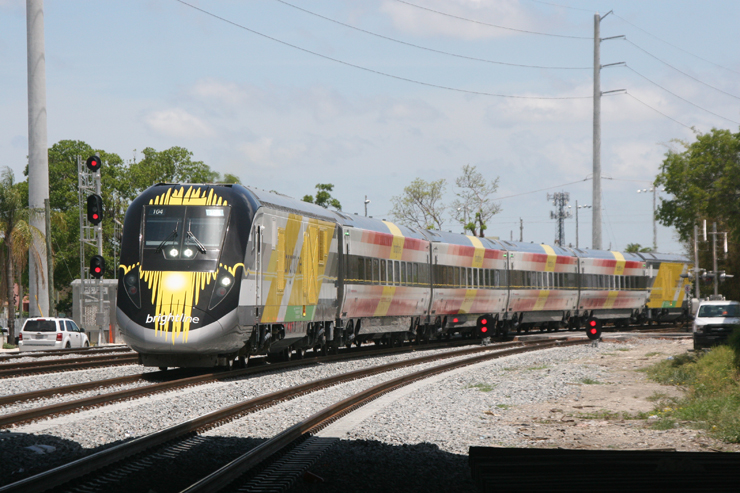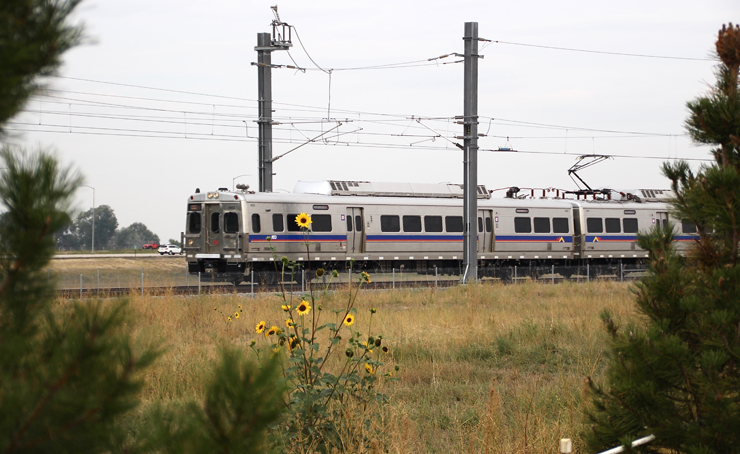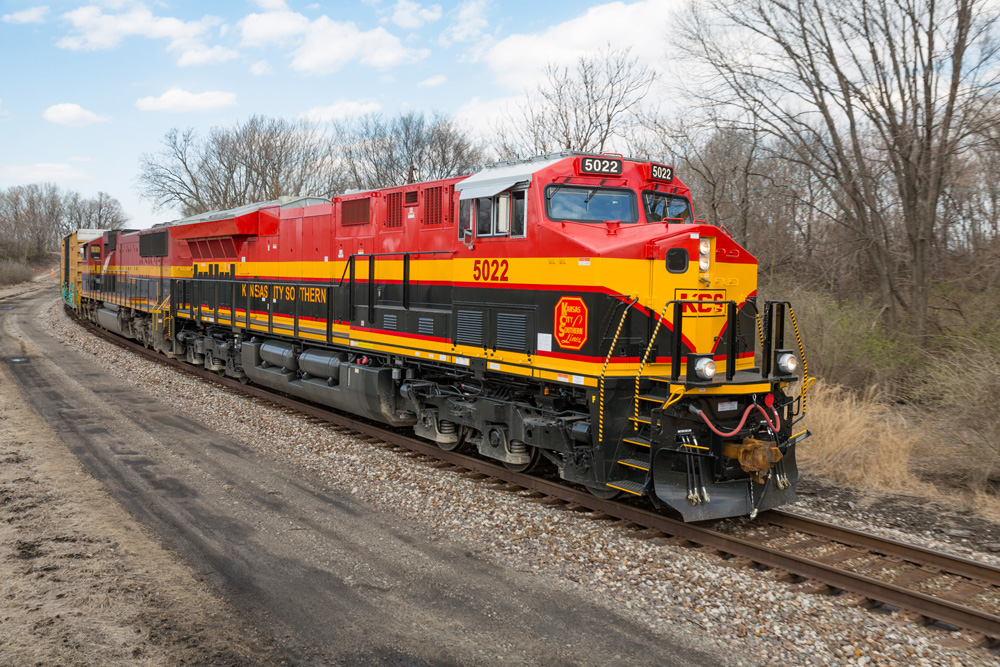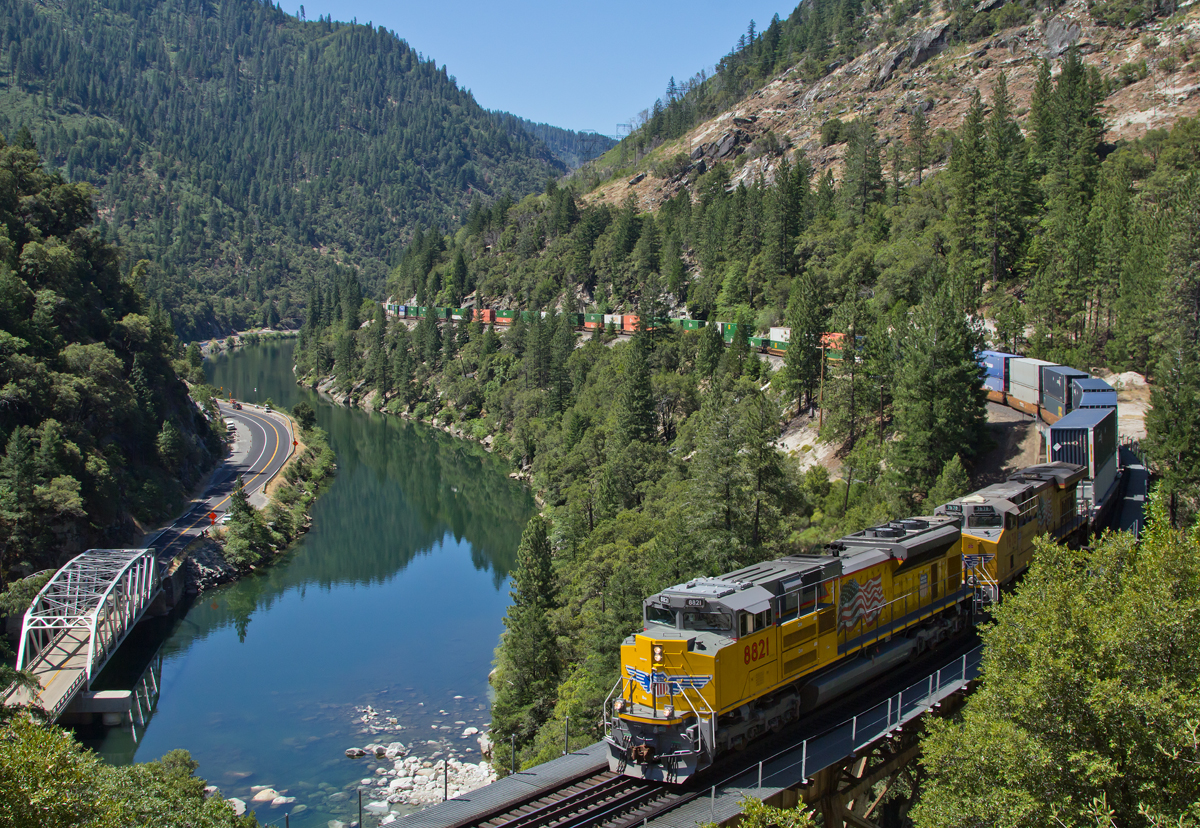The Sunshine State: tourists flocking to Orlando, college kids on spring break, retirees riding golf carts, international partiers dancing until dawn at Miami Beach nightclubs. Florida casually mixes old and new.
America’s oldest city is St. Augustine, which Henry Flagler found deficient in transportation and so created the Florida East Coast Railway.
Along its tracks now run something new, yet old: private-sector, for-profit passenger trains, largely absent from American rails for many decades. It was Brightline, but is now Virgin Trains USA, running between Miami and West Palm Beach, and maybe someday to Orlando.
In its inaugural year of 2018, the new railroad carried 579,000 passengers as it built out its service.
“Our business model has always focused on city pairs that are too short to fly and too far to drive,” says Ben Porritt, senior vice president of corporate affairs at Virgin Trains USA. That equates to end points 200 to 400 miles apart. Rail often gets 15-30% market share in those corridors, Porritt says, adding that they are “highly profitable.”
Ramping up in 2018, the company recorded a net loss of $117 million and loss on operations of $110 million, financial statement copies provided to Trains. With the Miami-to-Orlando segment expected to be in full operation by 2023, Virgin Trains USA projects revenue of $567 million with $385 million in pre-tax profits.
Fares account for about 86% of projected income, with the rest coming from ancillary revenue.
“We own our station experience and we own our onboard experience,” says Porritt. That allows Virgin to profit from food and merchandise sales, advertising, sponsorships, and space rental at their stations.
“Ancillary revenue becomes a piece of this puzzle that others can’t count on,” he says.
There’s another big piece as well: real estate development at and around key stations.
Florida East Coast Industries, parent of Brightline, is developing a six-block office, retail, and residential center surrounding the new downtown Miami station, branded as Virgin MiamiCentral. Two residential high-rises are under construction and two completed office towers were sold in April for $159 million. In West Palm Beach, they’ve built a 24-story luxury apartment and retail tower. The company is also eyeing development in Fort Lauderdale and Tampa.
“We look at this as more than simply a transportation business,” Porritt says.
The globally known Virgin brand appears on airliners, hotels, cruise ships, and luxury retreats. It operates tours and safaris. That brings a wide range of ways to cross-sell Virgin customers. Think: a tourist flies Virgin Atlantic to Orlando, takes a Virgin train to Miami and departs on a Virgin Holiday Cruise.
Already looking beyond Florida, the company acquired XpressWest, a stillborn project to build high speed passenger rail between Las Vegas and Victorville, Calif., about 90 minutes by car from Los Angeles. Virgin already owns the Hard Rock Hotel in Las Vegas, which it will reopen next year as a Virgin Hotel, and is looking ahead to development around its planned station in the casino capital.
As Virgin Trains seeks to fulfill its ambitions in Florida and California, other investors are looking to lay rails in Texas for a 200-mph train connecting Dallas and Houston.
“The market makes sense from a high speed rail perspective,” says Texas Central chief investment officer Tim Keith. Before selecting that route, they looked at 97 city pairs in the U.S. from a business-case perspective. Their research found that 16 million trips a year are taken between Texas’ two largest cities, with 90% by car. Most of those are end-to-end.
At 240 miles, it’s a long drive. The train’s planned 90-minute schedule time will cut that considerably. And Texas Central will be able to compete with air travel, Keith says, given weather delays and the inherent time penalties for security screening, boarding, and deplaning.
Unlike Virgin, which has trackage rights on Florida East Coast Railway and will mostly build to Orlando alongside existing highways, lowering construction costs, Texas Central will have to establish and build its own right-of-way from the ground up.
Estimated start-up costs are at least $15 billion, Keith tells Trains. But he adds that the sparsely populated, flat topography between Houston and Dallas will help reduce costs.
To attract investors, the venture not only needs to cover the costs of operations, “but also the cost of servicing the capital required to build the infrastructure,” Keith says.
Keith acknowledges that 100% private funding doesn’t work for every project.
“That will ultimately come down to the size of the market and the risks inherent in that market,” he says. “But that will create the opportunity for PPPs as well as straight private investment.”
By that, Keith is referring to public-private partnerships, also known as P3s.
Public-private partnerships can lower upfront costs and shift risks to the private sector. These often take the form of design-build or operations-and-maintenance contracts.
The largest transit public-private partnership in the U.S. is Denver’s Eagle P3 project, which this year completed the last of three new commuter rail lines. The $2.2-billion undertaking included $1.03 billion in federal funding and $450 million in private financing, and was delivered within budget.
A group called Denver Transit Partners, led by Fluor, entered into a 34-year agreement in 2010 with the Denver Regional Transportation District to design, build, finance, operate, and maintain 40 miles of electric rail service on three lines. The contract also included 56 commuter rail cars along with a new maintenance facility.
LA Metro has three current rail transit projects under way as design-build delivery projects and two others are being studied for P3. These include the proposed Sepulveda Transit Corridor linking the San Fernando Valley and LAX, and the West Santa Ana branch, a future light rail line that would connect downtown LA to southeast Los Angeles County.
Not all projects qualify for P3. Nadine Lee, LA Metro’s chief of staff, says they carefully evaluate each potential project and explains that they look to the private sector to “deliver outcomes more so than just projects.”
She also points out that these partnerships bring another welcome benefit: “We want to leverage the P3 opportunities because it may help us free up cash flow to do other projects.”
Growing interest from capitalists signals new funding opportunities for passenger rail transportation. But private investors won’t risk their money if they don’t expect a return on their investment.

















Too little, too late. Too much graft and corruption in pricing.
It’ll never happen, and if it did, It’d never work – too much space
from the Mississippi River towards the west. and We’d be expected
to pay our “Fair Share” for goods not received. As they say in
polite company – screw you too ! ! !
I understand there WERE strikes and labor “difficulties” during World War Two that are conveniently “forgotten”. Passengers were still a losing proposition in most locations but losses were more bearable and justifiable. Had higher fares been instituted at the beginning of the century most passenger operations might have been profitable but regulation froze rates in a period of slow steady inflation. (This is the period wherein people started to spend more money and there was a four-fold increase in passenger traffic 1890-1910.) But the basic problem remains: where and at what rates are you going to get the business and is it enough to “justify” doing and operating the project?
At the end of World War II we had the best passenger train system in the world bar none. It was capitalism at its best. The railroads built their infrastructure, dispatched that system and removed its own snow. Their reward? Heavy taxation and gleeful taxpayer support of competing modes. Hence, today.
@Jim Norton: We were world class at the end of WWII because the war effort led by the government demanded it. No strikes allowed by union crews. Exorbitant and lazy freight rate increases accelerated by post war union strikes and legacy pre-War mandates (ie: regulation).
In 1956, the US transportation network was evenly split between air, rail and road.
People “gleefully” left because compared to rail fares, paying a gas tax to obtain free right of way was way more convenient.
If the railroads had been deregulated as a post war action and not waited for Staggers to come along 35 years later, we might be having a different conversation. Passenger rail would have been eliminated or reduced to busy routes by 1960, not 1992.
WW2 simply deferred the inevitable.
No Doug the reason NYC to Boston or DC in 90 minutes isn’t that the airlines don’t want it. The airlines have plenty of other traffic and don’t need (and likely don’t want) the short haul. The reason we don’t have mega-speed trains is that, well, if you don’t know, I really can’t explain it.
Imagine NYC to Boston or DC in 90 minutes. Airline killer, which is why it’ll never happen.
Denver’s Eagle P3 was financed 2/3 government and 1/3 private. What kind of partnership is that and how are the splits made? Who gets to pay for future maintenance when the privates take their nickels and go home?
I am not inclined to use public transit, as I desire privacy and flexibility that no train, trolley or bus can provide.
As for Amtrak, it desperately needs to upgrade the overall experience of rail travel.